Tan Trao Relics

Tan Trao Relics is considered one of the most important historical sites in Vietnam. It was the revolutionary base of the Viet Minh during the First Indochina War (1946-1954) and one of the most important historical sites in Vietnam.
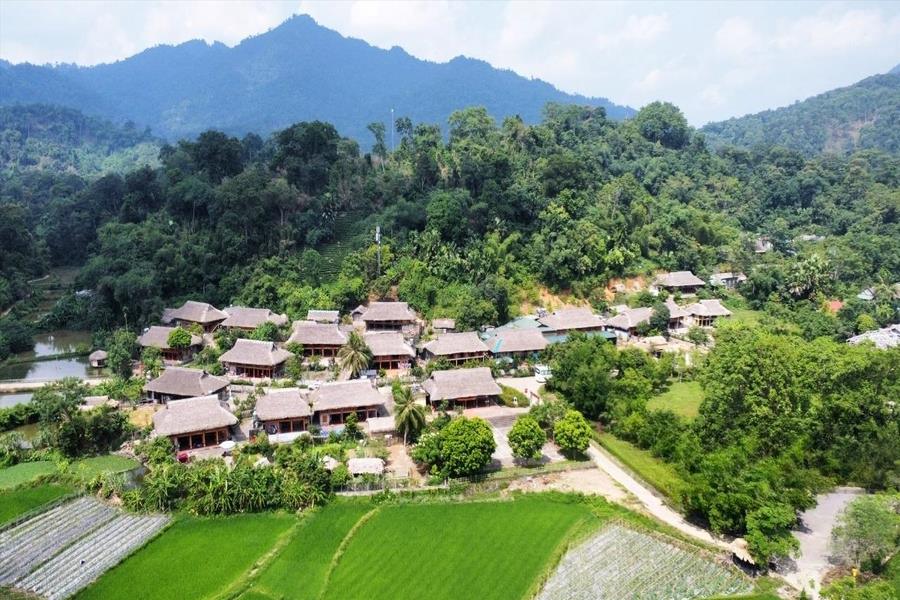
Tan Trao Relics close to nature
The Tan Trao Relics was recognized as a Special National Relic Site in 2012. The site covers an area of 2,500 hectares and includes over 170 relics, including caves, shelters, and meeting places used by the Viet Minh. Under the Tan Trao banyan tree, President Ho Chi Minh drafted the Viet Minh Constitution in 1951, making it Vietnam's most famous relic.
Today the relic is a popular tourist destination, and there are many things to see and do in the area. Visitors can explore the caves and shelters, learn about the history of the Viet Minh, and pay their respects at the graves of the martyrs. Asia King Travel would like to show you more about this Vietnam Special Relic.
Tan Trao Relics is located in Son Duong District, Tuyen Quang Province, Vietnam. The relic site is just over 110 kilometets northeast of Hanoi. There are several coach routes run from Hanoi to Tuyen Quang. Once in Tuyen Quang, visitors can take a taxi or motorbike to the Tan Trao Relics.
Starting from Hanoi, you follow the Noi Bai - Lao Cai Highway. Then turn onto Highway 2B at the intersection at Kim Long, Vinh Phuc Province. After driving for some kilometers, go onto National Highway 2C to get to Tuyen Quang Province.
Suggested for you: Dien Bien Discovery: 2-Day Journey into Vietnam's Historic Heartland
The best time to visit the Tan Trao Relics is in August and September. During this time, many events are organized to commemorate the victory of the August Revolution (August 19, 1945) and Vietnam National Day (September 2, 1945). Coming on these days, you will see the solemn atmosphere of the Vietnamese people in front of Revolutionary relics.
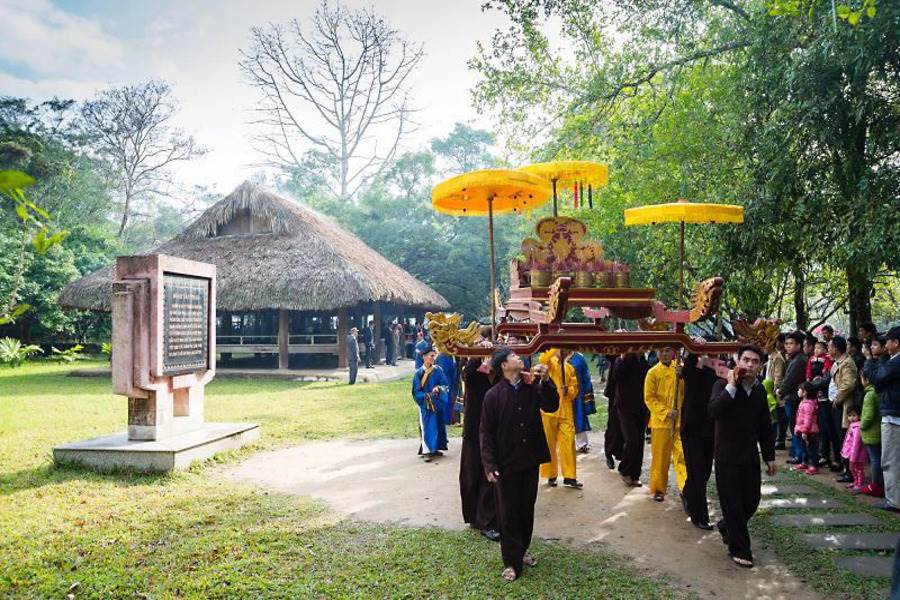
Village tutelary procession and the 75th anniversary of Ho Chi Minh's return to Tuyen Quang in Tan Trao Ward
The weather might be hot at this time, so remember to bring sun protection accessories. If you don’t want to go at peak tourist season, you can plan a trip between October and April. These months have pleasant weather conditions, expect cooler temperatures and less rain.
With a large number of relics, Tan Trao is a museum of Vietnamese revolutionary history. Here are some of the most important attractions you should see when visiting Tan Trao Relics:
Tan Trao Communal House is a small wooden-stilted house with a thatched roof to serve as a place of worship and gathering for the villagers. On August 16, 1945, the National Congress was held under the communal house to deliberate ten important policies, including the establishment of the national flag and anthem, and the formation of a provisional government.

Outside Tan Trao Communal House
The Tan Trao Banyan Tree is about 500 meters east of the Tan Trao communal house. This is the most famous relic in the Tan Trao Relics.
Under the shade of this banyan tree, on the afternoon of August 16, 1945, the Vietnam Liberation Army held a military departure ceremony. General Vo Nguyen Giap read Military Order No. 1 and immediately marched to liberate Hanoi, marking the birth of the Vietnam People's Army.
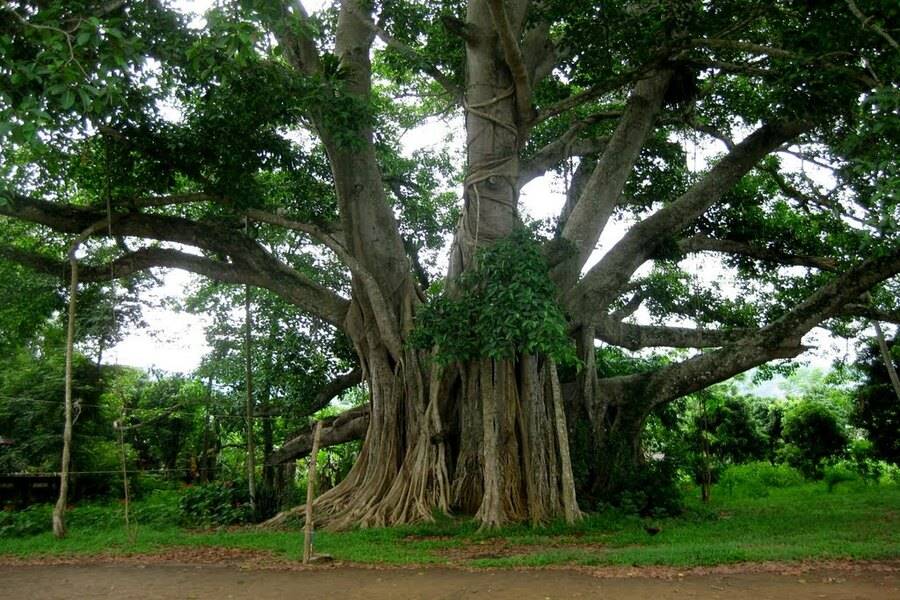
Many historical events of the Vietnamese Revolution took place under the shadow of Tan Trao
This was a simple wooden house where President Ho Chi Minh lived and worked from May to August 1945. The shack is preserved in its original condition, and visitors can see the room where Ho Chi Minh slept and the desk where he worked. From a small shack, Ho Chi Minh led the way for the entire nation, creating a turning point of great historical significance.
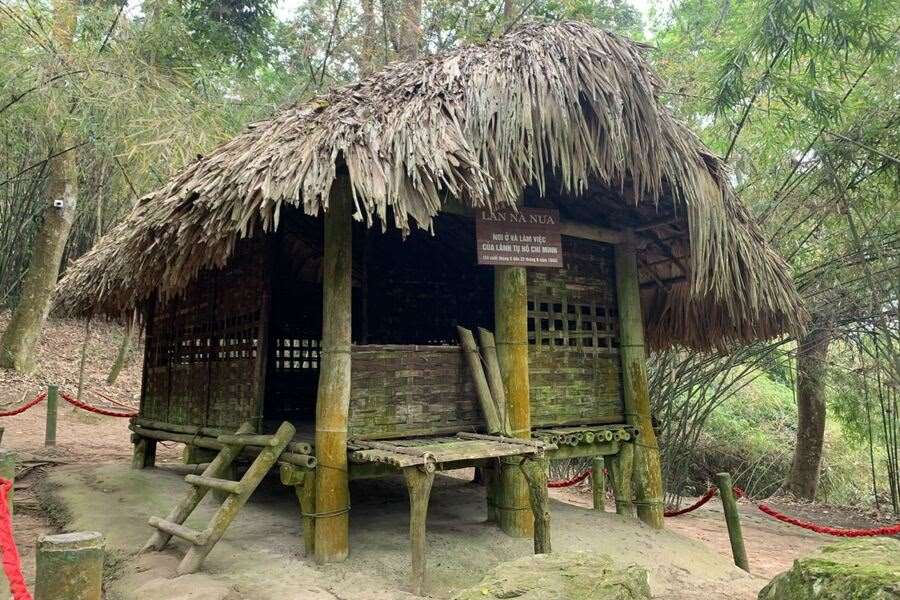
Ho Chi Minh used to live in many difficult conditions like Na Nua Shack
Hang Bong Shack served as a headquarters for the Communist Party of Vietnam Central Committee, the Government, and Ho Chi Minh during the Viet Bac Campaign against French colonial forces. From 1950 to 1951, Ho Chi Minh directly commanded the Vietnam - China Border Campaign (1950) and the 2nd National Congress of the Party (February 1951) in this shack.
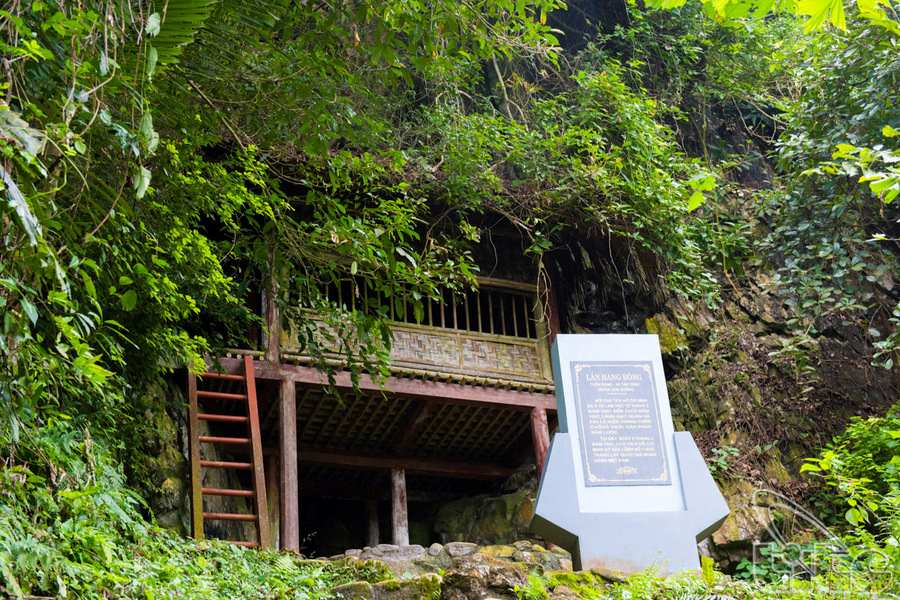
The shack was built next to Bong Cave
Don't stray off marked trails or make an impact on historical structures. This helps protect the relics and the surrounding environment. Smoking is strictly prohibited to prevent fire hazards to shacks and shelters. Better hiring a local guide for a more enriching experience. They can provide insights into the historical significance of the relics and translate any information signs.
While there's no strict dress code, it's recommended to dress modestly out of respect for the historical significance of the site. Keep your voice down to maintain the tranquility of the place and respect other visitors. Finally, be a responsible tourist and do not litter until find a designated bin.

Let's quietly listen to the introduction about historical relics. Source: Binh Duong online newspaper
Most of the relics in Tan Trao are free to visit, you only have to pay a VND 20 000 entrance fee. You can bring extra money if you want some food and drink options at the stall. Be wary of any fee collection actions you consider unreasonable and notify the site management board immediately.
The Tan Trao Relics are a reminder of the Vietnamese people's struggle for independence and freedom. They are a place where visitors can learn about the history of Vietnam and pay their respects to those who fought for their country. Contact us now to witness heroic historical certificates of Vietnam.
Suggested for you: Vietnam Excursions